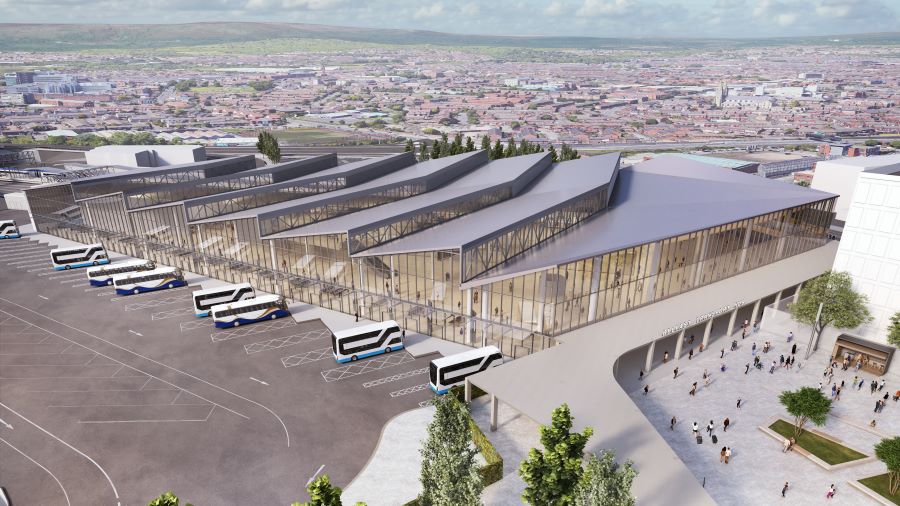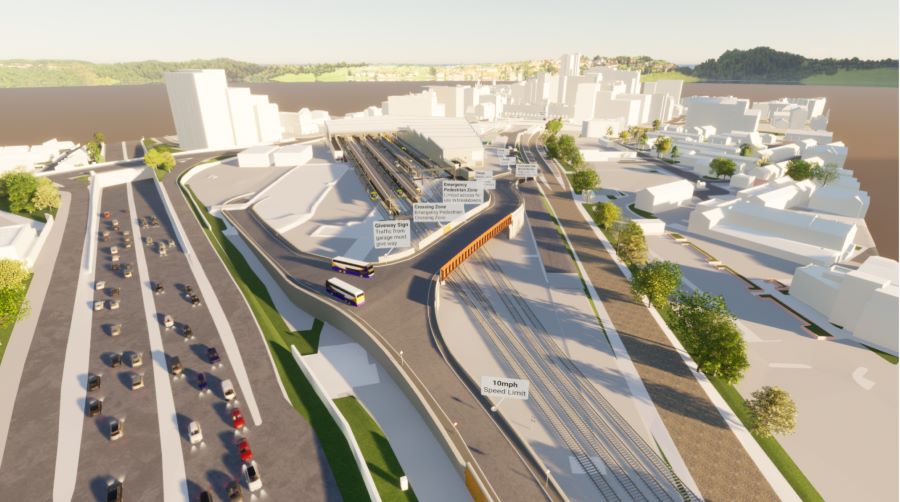The Belfast Grand Central Station project is the largest infrastructure project on the island of Ireland, sitting at the heart of Weavers Cross, a new destination in Belfast.
With its expected operational launch in late 2024, this flagship undertaking represents a pivotal milestone, doubling the number of rail platforms and expanding the bus stands to accommodate up to 20 million passenger journeys annually.
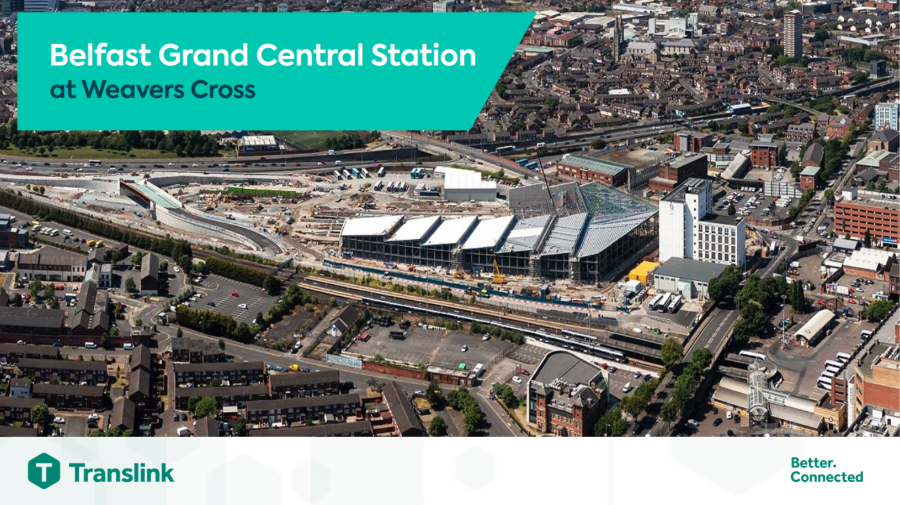
The endeavour is not without challenges, including the installation of 22 miles of piling, the construction of a busway bridge, seamless integration into the existing rail network, all while ensuring the uninterrupted operation of existing bus and rail stations. Moreover, it’s essential to minimise disruptions to passenger journeys and prioritise safety, all while fostering collaboration with diverse stakeholders, from government entities, business and local communities.
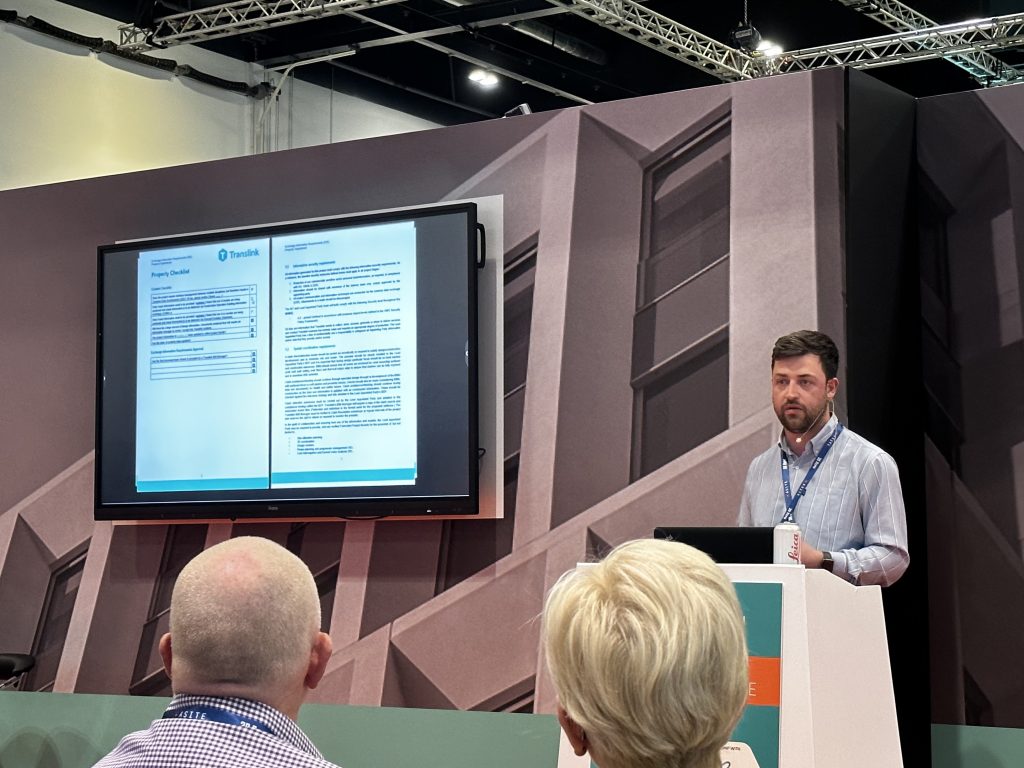
Chris Millar presenting at Digital Construction Week 2023
At Digital Construction Week 2023, Chris Millar, Translink’s BIM Manager, provided a comprehensive overview of how Building Information Modelling (BIM) and Information Management have played pivotal roles in surmounting these challenges. Millar underscored the core challenges encountered during the project’s evolution and the innovative solutions employed to overcome them.
Adherence to applicable standards
The project’s journey began in 2013 with the formulation of the conceptual masterplan, guided initially by PAS Standards for Information Management. Over the years, the landscape of standards and guidance has evolved significantly. However, Northern Ireland’s BIM policy hasn’t evolved in line with the Cabinet Office’s Information Management Mandate. In response, Translink took the initiative to align with UK best practices and transitioned to the ISO 19650 suite of standards.
Belfast Transport Hub
Transitioning to ISO 19650
To ensure seamless project coordination, Translink focused on establishing a strong foundation for comprehending information requirements. This effort led to the development of user-friendly and robust documentation designed to aid in the coordination of project information requirements. This included an Employers Information Requirements (EIR) document, complete with a checklist that automatically populates relevant sections. This feature empowers Project Managers to interpret general requirements easily, ensuring consistent terminology application.
A security-minded approach
Recognising the project’s status as critical national infrastructure, it became evident that a security-minded approach was imperative. Conforming to ISO 19650-5 guidance, it was swiftly determined that this landmark project would necessitate underground surveys and collaboration with NI Water to manage data retention and disposal effectively.
Busway Bridge
The NI water sewer challenge
In addition to the station’s already formidable construction challenges, the presence of three culverts and the primary Belfast sewer line beneath the site posed additional complexities. Notably, the sewer line ran in close proximity to the busway bridge, raising concerns about potential damage during the piling foundation installation. Traditional sewer monitoring during extensive groundworks would typically require a large crew, including workers in confined spaces within the tunnel, two rescue teams on standby, and cranes at the ready. Collaborating with GRAHAM, our contractor, we devised an innovative alternative.
Rather than relying on conventional methods, digital technology emerged as a safer, cost-effective solution. Utilising a digital scanner on a raft, which traversed the tunnel, not only enhanced safety but also delivered superior results while significantly reducing operational costs.
Stakeholder engagement
In a project of this magnitude, involving numerous stakeholders at every stage is a given. Coordinating with the Department of Infrastructure, political parties, community groups, and passengers required innovative engagement solutions. The introduction of virtual reality (VR) proved immensely successful and was employed in various meetings and events to provide an interactive glimpse of the project’s final outcome. Translink invested in cutting-edge software, digital tools, and staff training to leverage this technology effectively whilst working with various companies in Northern Ireland to understand how this technology could benefit Translink further.
Asset information requirements
Anticipating the project’s lifecycle, it became imperative to capture asset information at the outset, ensuring seamless coordination with internal teams responsible for station operation and asset management. This approach was instrumental in preventing data loss and minimising redundant efforts.
By comprehending the existing asset management tools and the Property team’s requirements, Translink ensured the collection of accurate information during the design and construction phases. This information can now be effectively utilised, both in the present and the future.
Integrating Uniclass codes into the asset management system and populating them from the design model, while working closely with end-users, guarantees that the correct information is captured and poised for utilisation rather than being lost.
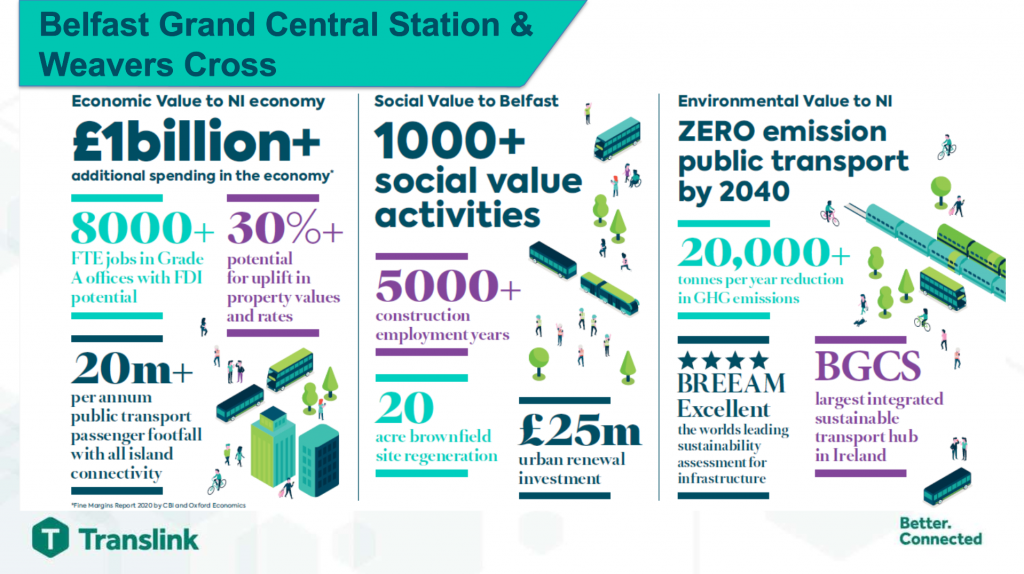
In conclusion, the Belfast Grand Central Station project exemplifies the remarkable strides made in the realm of BIM and Information Management.
By aligning with global standards, adopting innovative technologies, and engaging stakeholders proactively, Translink has set a precedent for successful project execution and information management in the modern construction landscape. This project stands as a testament to the power of collaboration and forward-thinking strategies in the pursuit of building success.
 By DCW Connect
By DCW Connect